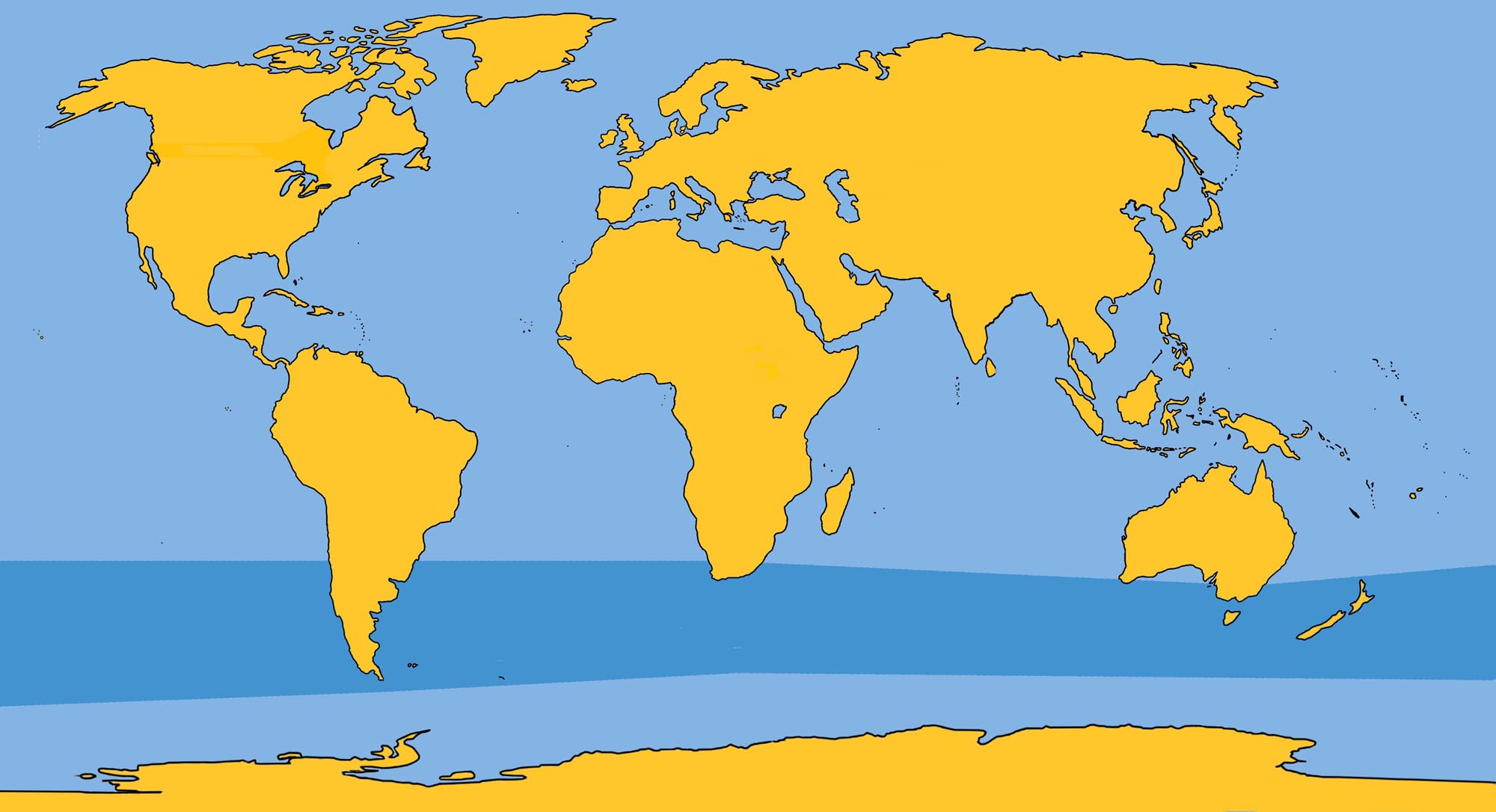Tasman Beaked Whale
Family: Ziphiidae
Genus: Tasmacetus
Species: T. shepherdi Oliver, 1937
Cetologist William A. Watkins reported the first sighting of a Shepherd’s beaked whale off New Zealand. It was not described until 1937 and remains one of the least known of all cetaceans. Most information has been derived from limited strandings in New Zealand, Argentina, and Chile. The animal has been assigned its own genus because, among other things, it is the only beaked whale with functional dolphin-like rows of teeth in both the upper and lower jaws.
Physical Description: This large stocky animal resembles a cross between a bottlenose whale and a typical beaked whale. Its circumference nearly equals its length. Typical beaked whale wishbone throat indentations are found.
Color: The dark brown dorsal becomes lighter on the sides; white ventrally.
Fins and Flukes: A well-developed falcate dorsal fin is located slightly to the rear of the mid-back region; it is longer than those of other beaked whales. The flippers are small, and the flukes display little or no median notch.
Length and Weight: Males reach a recorded length of 23 ft (7 m); females may reach equal size or larger, but the greatest recorded length was 22 ft (6.6 m).
Teeth: 17 to 19 teeth are located in each side of the upper jaw, and 23 to 28 teeth in each side of the lower, including a pair of very large teeth at the tip, which do not erupt in females.
Feeding: Stomach samples from one stranded animal confirmed it feeding on bottom fish.
Breathing and Diving: No information available.
Mating and Breeding: No information available.
Herding: No information available.
Distribution: It is known from limited strandings in New Zealand, Argentina, and Chile, suggesting a Southern Hemisphere distribution.
Migration: No information available.
SHEPHERD’S BEAKED WHALE DISTRIBUTION







